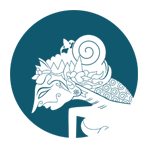The Influence of Strain Type and Female Age on the Receptivity of Female Drosophila melanogaster in Homogamous Crosses
Abstract
Drosophila melanogaster is a widely used model organism in genetic research due to its short life cycle and the presence of many genes homologous to those found in humans. It plays an important role in studies related to genetic inheritance, gene interaction, sex determination, and developmental genetics. One key aspect of its reproductive biology is female receptivity—the willingness of a female to accept mating—which is influenced by various internal and external factors. External factors include environmental conditions such as temperature and humidity, as well as male courtship signals like wing vibrations and chemical cues. Internal factors are mainly related to the female's sexual maturity and mating status. Generally, female receptivity increases with age after eclosion, reaches a peak, and gradually declines. This study investigates the impact of strain type and female age on receptivity in homogamous crosses of D. melanogaster, using two mutant strains: dp (with a wing mutation) and wa (with an eye color mutation). Receptivity was measured by the presence or absence of F1 offspring following crosses between males and females of the same strain, with females tested at different ages ranging from 10 to 60 hours after eclosion. The results indicate that strain type does not have a significant effect on female receptivity. In contrast, female age plays a clear role: individuals aged 30 years and older were more receptive and more likely to produce offspring. No significant interaction was found between strain type and age. These findings suggest that female receptivity in D. melanogaster is more strongly influenced by sexual maturity (as indicated by age) than by genetic differences between strains.
Keywords
Full Text:
PDFReferences
Feng, Kai. (2010). Neural Control of The Female Mating Decision In D. melanogaster. Disertasi. (Online), (http://othes.univie.ac.at/10366/1/2010-05-21_0701378.pdf), diakses tanggal 15 November 2013.
Grillet, et.al. (2005). A Drosophila Male Pheromone Affects Female Sexual Receptivity. Proc. R. Soc. B 273, 315–323 doi:10.1098/rspb.2005.3332. (Online), (http://rspb.royalsocietypublishing.org), diakses 9 November 2012
Indayati, Nur. (1999). Pengaruh Umur Betina dan Macam Strain Jantan terhadap Kemampuan Kawin Kembali Individu Betina D. melanogaster. Skripsi: IKIP Malang
Karmana, I. Wayan. (2010). Pengaruh Macam Strain dan Umur Betina terhadap Jumlah Turunan Lalat Buah (D. melanogaster ). Gane? Swara. Vol.4 No.2
Kimball, J. W. (1983). Biologi Jilid 1 edisi kelima. Jakarta: Erlangga.
Muliati, L. (2000). Pengaruh Strain dan Umur Jantan Terhadap Jumlah Turunan Jantan dan Betina D. melanogaster.Skripsi tidak diterbitkan.Malang: FMIPA Universitas Negeri Malang
Nusantari, Elya. (1993). Kajian Perkawinan Kembali Individu Betina D. melanogaster dan Perannanya pada Pengajaran Genetika dalam Pendekatan CBSA. Thesis tidak diterbitkan: IKIP Malang.
O’Dell, Kevin M.C. (2003). The Voyeurs’ Guide to D. melanogaster Courtship, (online), (http://www.deepdyve.com/lp/elsevier/the-voyeurs-guide-to-drosophila-melanogaster-courtship-l6Ounc3J81), diakses tanggal 15 November 2013.
Parvati, et al. (2009).Wonder Animal Model For Genetic Studies - D. melanogaster –Its Life Cycle And Breeding Methods – A Review. Sri Ramachandra Journal of Medicine. Vol. II, Issue 2
Silvia, Triana. (2003). Pengaruh Pemberian Konsentrasi Formaldehida terhadap Perkembangan Larva D. melanogaster. Bandung: Jurusan Biologi Universitas Padjadjaran
DOI: https://doi.org/10.14421/biomedich.2025.142.937-941
Refbacks
- There are currently no refbacks.
Copyright (c) 2025 Lisa Savitri, Kharisul Ihsan, Rochmad Krissanjaya, Elfred Rinaldo Kasimo
Biology, Medicine, & Natural Product Chemistry |





